How about a TV box, not only depends on the appearance and content resources of the product, but more importantly, on the inherent quality and workmanship. So, what is the first 64-bit eight-core H7 three-generation TV box that Haimei Di first introduced? We will conduct a comprehensive disassemble evaluation.
The dismantling of the TV box is very simple, as long as the back of the 4 screws can be removed, and the other is to pay attention to the fragile stickers, must be carefully blown after the hair dryer, slowly open Caixing, or warranty only Ha ha, but according to the box case I used, it doesn't seem to be a bad situation during the warranty period, so under the circumstances that the average person is enough, don't be too tangled.

Open the shell, the third generation of Haimeidi H7 uses a red PCB board. The PCB board and the body are fixed with three screws. Just remove it.

After taking out the PCB board, you can completely separate the PCB board from the chassis by using tweezers or pulling the cable of the wireless antenna directly with nails.
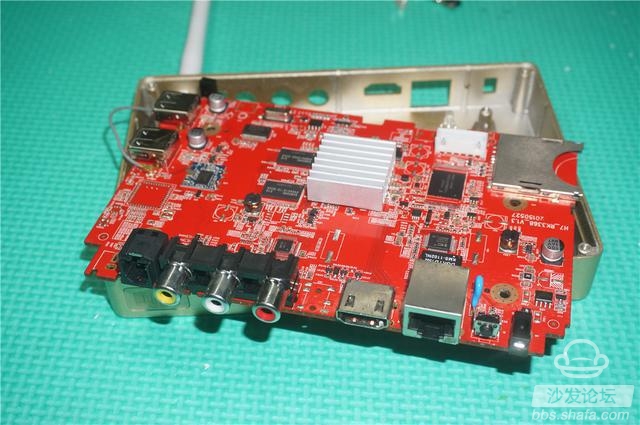
After the demolition

PCB front

Remove the heat sink on the CPU, you can see the new generation of RK3368 used by Haimeidi H7 third generation, RK3368 will no longer be introduced here, we can own Baidu.
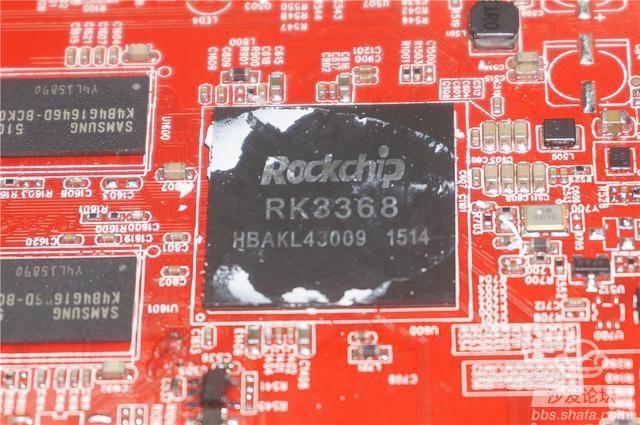
Haimeidi H7 third generation uses two Samsung 512MB of DDR3 memory to form 1GB of memory, its model is K4B4G164D-BCK0, distributed on the left side of the CPU.
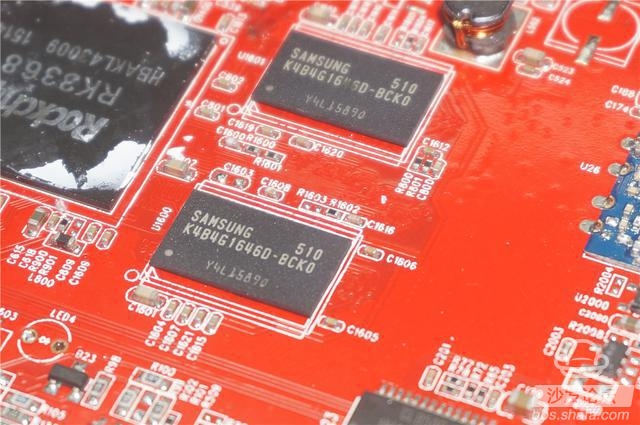
KMS-1102NL wired network card chip, DGKYD (Keyouda) produced. Below it is an Ethernet transceiver model number IP101GA.

Haimeidi H7's third-generation built-in flash memory uses Toshiba's eMMC chip, which has a capacity of 8GB and is modeled as THGBMBG6D1KBAIL.
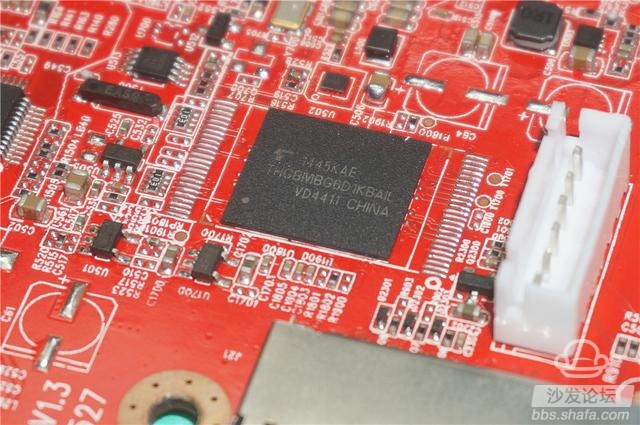
In terms of wireless network cards, Haimei Di H7 uses Realtek's Realtek8188ETV chip, which is also commonly used in today's boxes and flat panels. Supports 802.11B/G/N wireless protocols.
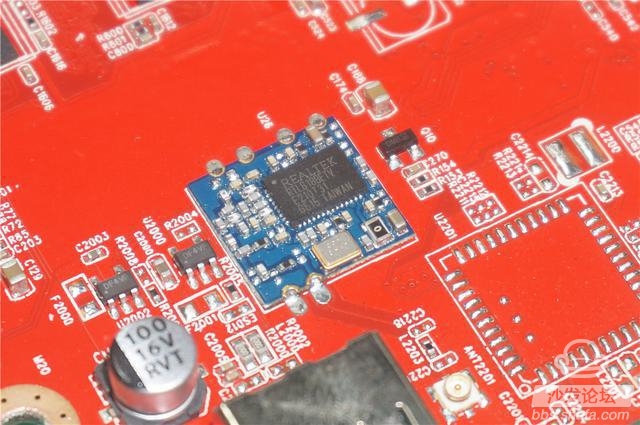
The GL850G USB2.0 chip features low power consumption, low temperature, and reduced pin count.

GM7122 video encoding chip, this chip encodes digital luminance and color difference signals, converts them into CVBS signals, supports NTSC-M, PAL-B/G standards and their sub-standards, and has master/slave modes, which can directly receive Effective video data can also be analyzed based on the CCIR656 standard format data valid video data. Its main application is high-definition player, set-top box, video capture card, etc...

Haimeidi H7 PCB board back...
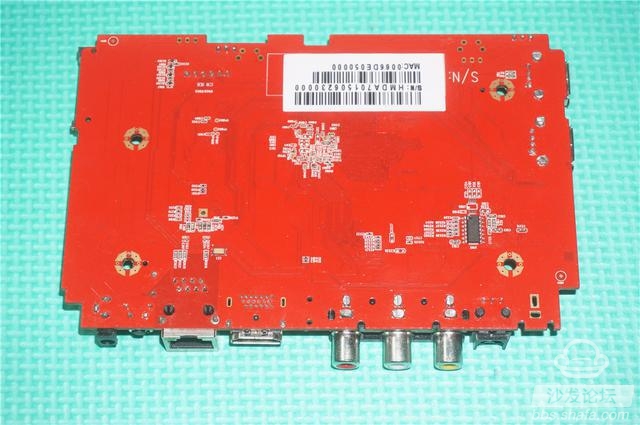
Disassemble video
Summary Haimeidi H7 third generation uses an integrated aluminum alloy material on the shell to improve the product's finishing grade, but also more conducive to product cooling, to ensure the normal and stable operation of the product. The design is relatively simple, and the model of the product is simply designed on the product with the 8-core mark in the lower right corner of the product.
The dismantling of the TV box is very simple, as long as the back of the 4 screws can be removed, and the other is to pay attention to the fragile stickers, must be carefully blown after the hair dryer, slowly open Caixing, or warranty only Ha ha, but according to the box case I used, it doesn't seem to be a bad situation during the warranty period, so under the circumstances that the average person is enough, don't be too tangled.

Haimei Di H7 three generation disassemble evaluation
Open the shell, the third generation of Haimeidi H7 uses a red PCB board. The PCB board and the body are fixed with three screws. Just remove it.

Haimei Di H7 three generation disassemble evaluation
After taking out the PCB board, you can completely separate the PCB board from the chassis by using tweezers or pulling the cable of the wireless antenna directly with nails.

Haimei Di H7 three generation disassemble evaluation
After the demolition

Haimei Di H7 three generation disassemble evaluation
PCB front

PCB board
Remove the heat sink on the CPU, you can see the new generation of RK3368 used by Haimeidi H7 third generation, RK3368 will no longer be introduced here, we can own Baidu.

RK3368 chip
Haimeidi H7 third generation uses two Samsung 512MB of DDR3 memory to form 1GB of memory, its model is K4B4G164D-BCK0, distributed on the left side of the CPU.

Samsung 512MB of DDR3 memory
KMS-1102NL wired network card chip, DGKYD (Keyouda) produced. Below it is an Ethernet transceiver model number IP101GA.

KMS-1102NL wired network card chip
Haimeidi H7's third-generation built-in flash memory uses Toshiba's eMMC chip, which has a capacity of 8GB and is modeled as THGBMBG6D1KBAIL.

Toshiba eMMC chip
In terms of wireless network cards, Haimei Di H7 uses Realtek's Realtek8188ETV chip, which is also commonly used in today's boxes and flat panels. Supports 802.11B/G/N wireless protocols.

Realtek's Realtek8188ETV chip
The GL850G USB2.0 chip features low power consumption, low temperature, and reduced pin count.

GL850G USB2.0 chip
GM7122 video encoding chip, this chip encodes digital luminance and color difference signals, converts them into CVBS signals, supports NTSC-M, PAL-B/G standards and their sub-standards, and has master/slave modes, which can directly receive Effective video data can also be analyzed based on the CCIR656 standard format data valid video data. Its main application is high-definition player, set-top box, video capture card, etc...

GM7122 Video Coding Chip
Haimeidi H7 PCB board back...

Haimei Di H7 PCB board back
Disassemble video
Summary Haimeidi H7 third generation uses an integrated aluminum alloy material on the shell to improve the product's finishing grade, but also more conducive to product cooling, to ensure the normal and stable operation of the product. The design is relatively simple, and the model of the product is simply designed on the product with the 8-core mark in the lower right corner of the product.